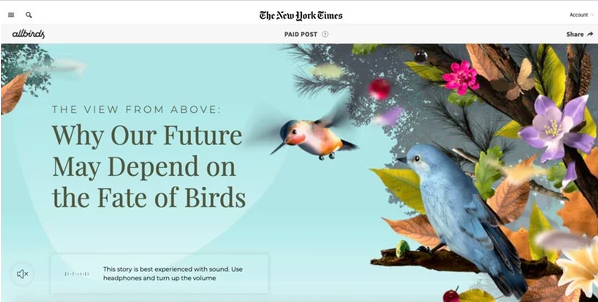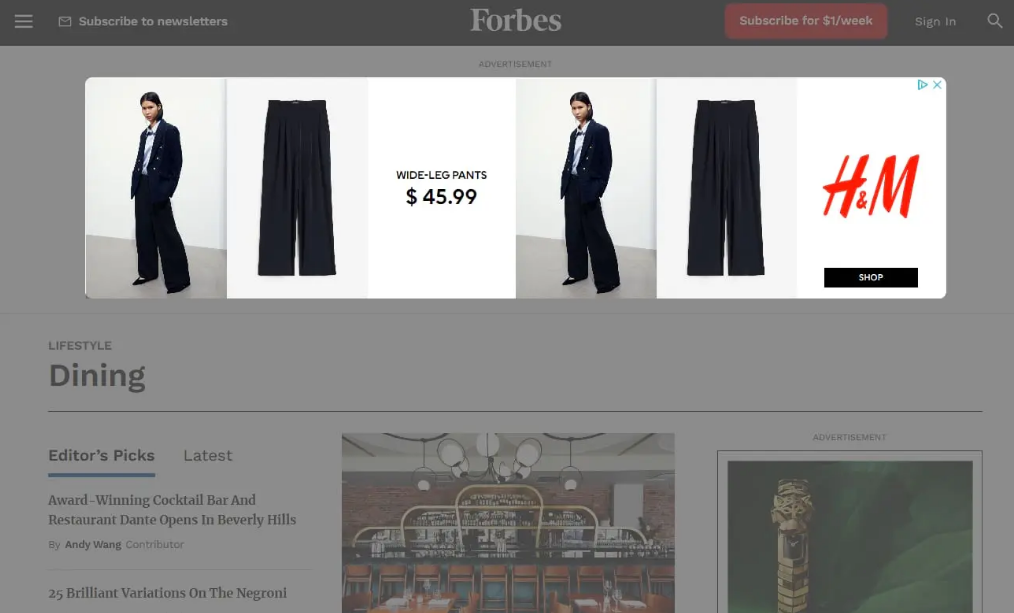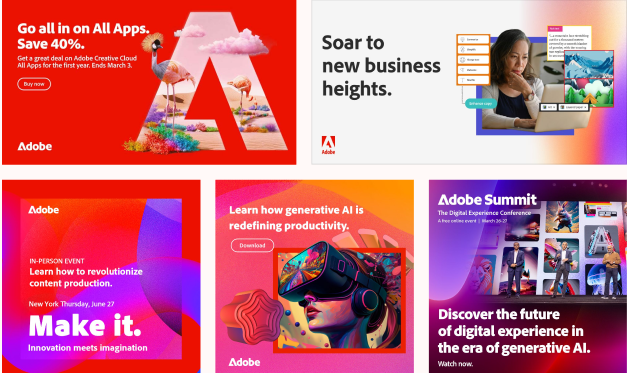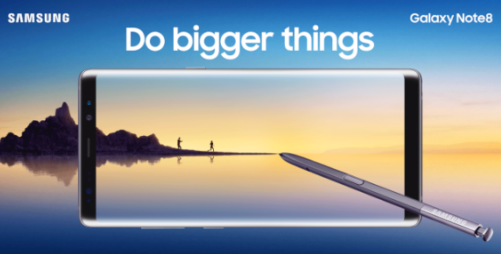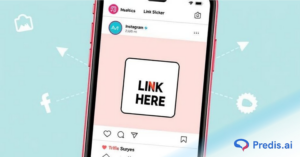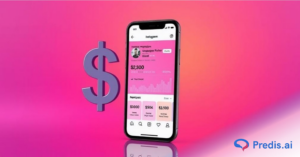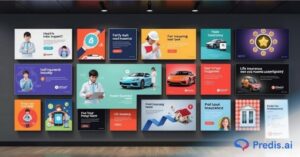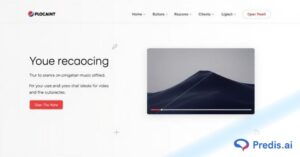When it comes to capturing your interest, display advertisements excel. Display ads are similar to billboards but for the web, so you’ve definitely seen them before. Targeting your potential clients based on their surfing habits and other demographic information is one of the many amazing advantages of display advertising.
They help customers get acquainted with and recognize your brand more quickly; they provide broad and focused visibility throughout the web; and they provide a high return on investment when combined with retargeting.
If you’re seeking ideas on what display ads types are effective and what kinds you may create, we have got you covered! This blog navigates you through an extensive list of display ads types, best-performing examples, benefits, best practices, and more.
Let’s dive in!
Display Ads: What Are They?
Online advertising that includes text, images, and a call to action (CTA) message that directs viewers to a landing page is known as display ads. Display advertisements are usually seen at the top or sides of websites, however, occasionally they may appear in the center of the content you are reading.
Display advertisements are an aesthetically pleasing, economical, and quantifiable means for a business to accomplish its marketing objectives.
Through tailored placements, various ad formats, creativity, and evaluation, display advertising has developed into a channel that provides reach, scalability, and efficacy. However, it’s useful to know how display advertisements vary from other online marketing options if you want to get the most out of them.

Display Ads Types with Top Examples
To improve your online visibility, viewership, and market reach, take into account the following display ads types when you create your online promotion and advertising strategies:
1. Banner Ads
Image advertising also referred to as banner ads, is shown in the sidebar, footer, or header of websites. The most prevalent type of display ads on the internet nowadays are banner adverts, which were the first of their kind.
All banner advertising was 468 pixels wide by 60 pixels deep initially, but now other standard dimensions are obtainable. Similar to their original shape, horizontal banner adverts are typically shown near the top of a website to grab visitors’ attention. Usually located on the right side of the webpage, vertical banner advertising is viewable to users as they navigate through it.
Another way that creators of mobile apps can earn money from their developments is by using banner adverts. Because mobile banner advertising is meant to fit on smaller displays, their dimensions are different from those of online banner ads.
You can design impressive mobile banner ads with Predis.ai’s Mobile Ad Maker. From mobile-optimized templates to seamless brand integration, Predis.ai offers a seamless ad creation process with maximum impact.
2. Native Ads
Native ads are paid media that mimic the design and aesthetic of a website or app and its purpose is to provide users with an effortless engagement.
Native advertisements don’t stick out on a webpage since they typically integrate with the aesthetic, layout, and style of the accompanying content. Contrary to conventional banner advertising, this gives viewers the impression that they are less invasive. Additionally, native advertisements more closely align with the purpose of the viewer since they are more relevant in context to the encompassing material. You can learn more about this by checking the native ads guide.
3. Animations Display Ads
Display advertisements with animations are a good way to promote brand messaging, goods, and services since they may draw in readers by combining text, audio, and visual elements.
These components also enable you to employ animated display advertising as lengthy form ads that go into intricate or in-depth descriptions of a certain item, service, procedure, or issue.
Moreover, animated advertisements have the potential to be shared, which encourages viewers to promote a sponsored offer or sentiment. Increased audience interaction via animated display advertising can further strengthen a brand’s relationship with its intended demographic.
4. Interactive Display Ads
This type of advertising uses a variety of components to connect with internet viewers. Interactive display advertising featuring text headlines, photos, visuals, and other integrated features lets viewers interact with the content.
Interactive ads, which let viewers hover over specified areas of the ad to view material, click on items, and engage with the display ad, could prove useful for websites that want to showcase to potential consumers the internal characteristics of a particular product.
Businesses looking to enlighten consumers or inform audiences about certain goods or services will find these kinds of advertisements beneficial. The cost of producing interactive display advertisements might be more than that of standard display ads. They will, nonetheless, generate profitable returns. Ion Interactive’s research indicates that 88% of marketers think their firm stands out from the competition because of interactive content.
5. Retargeting Display Ads
Display advertisements that target audiences who are already acquainted with a product or service are known as retargeting or remarketing.
Let’s say somebody uses Google to access a business’s web-based shop and then uses their browser’s “back” button. They could come upon a corporate display ad on another website a few days later. The advertisement serves as a reminder of the product the user has viewed, perhaps leading to a transaction.
This technique may be attributed to the placement of cookies on a user’s browser by your site, which enables your adverts to reach that user across several ad networks. However, as global privacy laws become more stringent, many marketers are turning to alternative tactics like server-level marking.
6. Interstitial Ads
Full-screen advertisements that overlay a website or app’s UI are known as interstitial display ads.
They typically show up at times of natural change. similar to when you’re waiting for an internet page to finish loading or switching between app displays.
Due to its immersive format, interstitial advertisements are intended to effectively convey a message and grab viewers’ attention. To engage consumers and advertise goods and services, they may contain pictures, videos, or interactive components. Interstitial advertisements should be utilized carefully to prevent upsetting users and frustrating them, even if they might be useful in increasing conversions.
7. Video Display Ads
Video display advertising employs interactive visual material to instantly create a story and capture the interest of your viewers. These advertisements can also include audio to complement the visuals.
This kind of advertisement usually consists of a little video along with text urging the audience to click on the advertisement. On its website, the reader can discover further details about the entity that produced it.
Video display advertising has a very high attention-grabbing potential because of its motion and graphics. You still have to make your case as soon as you can, though. This is because some people won’t stay to the finish of your advertisements. Marketers believe that the most crucial aspect of producing video content is grabbing the interest of consumers in the first moments.
8. Expanding Ads
Expandable display advertising allows viewers to enlarge the ad above its initial size when it appears on a website. Some expandable display advertisements activate when users linger over some screen components, while other expanding advertisements can activate in response to a specific user-initiated activity.
Expanding advertising is frequently set up by advertisers based on user goals and behavior. For example, an expandable advertisement on a company website appears to users as a little display on the content page during the registration stage. The display ad grows to occupy more area on the page as users engage with the information, drawing viewers’ attention for several reasons.

9. Contextual Display Ads
Display advertisements that appear on websites that are explicitly relevant to the commodity or service being marketed are said to be placed contextually.
It provides tailored customer service by taking into account the keywords and content of a website. For instance, a contextual display advertisement for new exercise shoes can appear to a user on a fitness portal.
In contrast to behavioral advertising, contextual advertising does not monitor user data through cookies. This enables you to target users of websites that block you from obtaining data about third parties.
10. Lightbox Display Ads
Google created a unique type of display ad a while ago called lightbox display advertisements. These display advertisements resemble expandable display ads, which need interaction from website visitors to launch full-screen content.
Lightbox advertisements, on the other hand, may incorporate text, animations, music, video, and other components to increase interaction with online viewers, unlike typical expanding commercials.
The fact that Lightbox displays advertising only works when viewers hover over them for a few seconds or more is another important characteristic of these adverts. This important component lessens the possibility that viewers would inadvertently click the advertisement when they browse websites and engage with online content.
11. Rich Media Display Ads
For viewers to enjoy a sensory overload, rich media display advertising might include audio, video, or other multimedia components. Static advertising just contains text and graphics; these ads are different. Rich media advertisements include display video commercials.
Rich media advertisements may be used in the following ways because they promote audience interaction:
- Differentiate yourself from rivals who employ static advertisements
- Draw in viewers as they browse through pages on the internet to boost interaction at the end
- Boost the number of views
For instance, you might record a video of a client using one of your products and edit it into a rich media display advertisement. The ad can be viewed by the viewer using the cursor if the video has slide and zoom capabilities.
12. Pop-up Display Ads
Pop-up display advertising enables people to obtain information about offers, join up for services, or buy items from a business or brand by using a pop-up content element that is most frequently found on websites. Pop-ups are tiny, square boxes that show up on websites and encourage visitors to do a certain activity.
For instance, a company that offers web-based amenities to its clients can utilize pop-up windows on its website to interact with visitors and get them to subscribe to its email list rather than having to find an email address for each prospect to learn more about what it delivers.
In this instance, the company encourages viewers to subscribe to its email newsletters by having a pop-up advertisement display after they visit its website for a few seconds.
13. Video Pre-Roll Ads
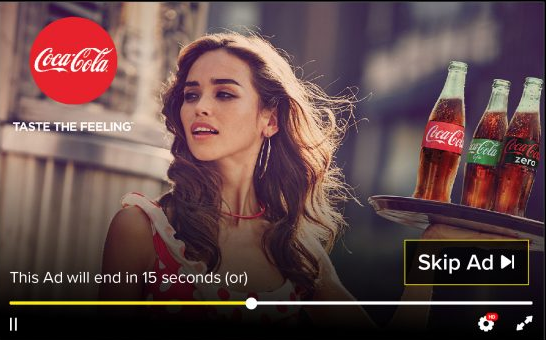
On websites like YouTube, these advertisements play prior to video content. They might linger for a few seconds or a few minutes. Since a viewer will probably endure an advertisement to see the intended video, video commercials are successful. This can raise brand recognition and ensure exposure for your video advertisement.
Ads on YouTube and other streaming services are tailored to the specific video that the user has chosen to watch. As a result, you can focus on niche markets that may be intrigued by your goods and services. For instance, you can promote activewear before a fitness video.
Top Benefits of Display Ads
Even though click-through rates (CTRs) for display advertisements are often low, CTR is not the only indicator of their efficiency. Display advertising considerably increases brand recognition and willingness to buy when other metrics are taken into account.
Here are the top benefits of various display ads types:
1. They are Attention-Grabbing in Nature
Display-style advertisements created in the aesthetic of your company or brand and include visual information.
You can be as imaginative as you like when it comes to display ads. To make your display advertising shine, utilize huge text, rich material, video, music, vibrant colors, and even animation. The intention is to steer visitors toward the material you’d like them to discover and onto the path you wish them to take.
Similar to pay-per-click or sponsored search advertisements, display ads consist of a title, text, and URL. But what really sets display advertising apart is the addition of a visual, audio, or video component.
Additionally, character limitations are included in conventional SEM (Search Engine Marketing) adverts, which restricts the scope of your content. Display advertising provides you the opportunity to draw attention with attention-grabbing messages, images, and videos that showcase your business.
To complement this, understanding advertorial meaning is essential – it refers to promotional content crafted in the style of editorial articles, allowing brands to deliver in-depth messages that feel informative rather than purely commercial.

2. Boosts Brand Awareness
Display advertising serves to attract immediate attention, whereas search advertising impacts an audience to make a purchase. A recent research discovered that digital display advertisements can increase 80% brand recognition.
Display advertising is effective on websites that garner a lot of traffic from prospective consumers because of their broad reach. For instance, if you conduct a campaign with the Google Display Network (GDN), your advertising will be seen by specific consumers all over the world since they will be integrated into websites that have been meticulously picked.
Assume a client is looking for landscaping inspiration on a website. An advertisement for a garden center or store that sells gardening supplies is an illustration of a display ad that can be seen. It’s possible that the client was unaware of the promoted store. They might not even be considering buying anything.
However, the advertisement would inform them of a local store to visit whenever they needed gardening materials. This demonstrates how well-placed display advertising can help prospective buyers remember your business and persuade them when the moment is perfect.
3. Enhances Scope for Remarketing
With remarketing, your company can make targeted display advertising consumable for certain demographics while they surf the internet for other websites, based on who previously came to your website.
Once a prospective client is aware of your offering, a strategically positioned display ad can prompt them to buy.
Remarketing is an astute strategy for reaching out to prospective clients who might not have completed an original purchase or query. The Google Display Network offers a great deal of targeting versatility, including the ability to refine your targeting to appear just on particular sites or omit specified sites.
Even better, you can have display advertising that highlights an item or company slogan that an interested party saw while visiting your website.
4. Provides Metrics to Monitor Engagement Rate
Both Facebook Advertising and the Google Display Network provide comprehensive analytics that lists the most clicked display ads along with their respective click-through rates.
Furthermore, the GDN features an attribute known as a view-through window that tracks viewers of your display advertisement over a given period and determines if they become leads or customers.
5. Cost-Effective
Setting up display ads is not as costly as it is for other media, like broadcasting or television, which demand substantial production costs. You can begin developing display ads that can assist you in increasing traffic to your web page with only a picture and some content.
When a company first uses display advertising, it must comprehend the several types of billing contracts that specify how marketers will be compensated for their campaigns. An outline of the most typical billing arrangements is provided below:
- Fixed Price: Advertisers pay a set price for a set quantity of impressions or time, independent of how well the ad performs or engages viewers.
- Cost Per Mile: Charges to advertisers are determined by the quantity of impressions their adverts get, usually in multiples of 1,000 impressions. Exposure and brand presence are the main goals of CPM.
- Cost Per Click: Each click on an advertisement is paid for by the advertiser. Advertisers only pay under this performance-based pricing model when users interact with the advertisement.
- Cost Per Lead: The amount that advertisers spend depends on how many leads their advertising campaign generates. It is frequently employed when lead generation is the main objective.
- Cost Per Sale: The amount that advertisers pay depends on how many sales are solely due to their advertising campaign. This concept is frequently applied to e-commerce and affiliate marketing situations.
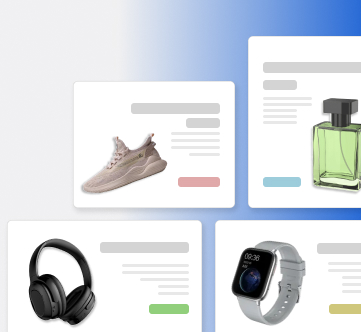
Display Ads Best Practices
Using the latest best practices is essential to maximizing display advertising and expanding your brand. Here are some considerations for developing and implementing a display ad campaign.
1. Opt for the Right Audience Targeting
You can use the Google Display Network to target specific demographics as well as particular times or locations.
Your goal when targeting a certain demographic is to persuade that audience to see your advertisement. Here are some methods for doing that:
- Remarketing: Display your advertisements to customers who have previously engaged with your brand or accessed your website.
- Affinity viewers: Reach out to individuals based on their preferences, even if they happen to land on a different website.
- In-market consumers: Select customers who are proactively contemplating purchasing goods or services similar to yours, based on their latest buying intent.
- Demographic audience: Target individuals based on their age, gender, parenting status, family income, or other variables.
- Customer Match: Display your adverts to potential clients using the information you’ve provided to Google about them.
Context-specific Targeting
Another kind of display ad targeting is context-specific targeting. This enables you to incorporate subjects or keywords into ad groups so that your advertisements appear on websites that include material related to the keywords you’ve selected.
Google finds a primary topic for every website by analyzing every page in the Display Network. Your advertisement can appear on a webpage if your keyword or subject aligns with the main focus of that webpage.
Pro tip: Match the targeting of your display ads with your content. Make different messages for different target audiences, ad groups, and promotions.
Use the Predis.ai AI Ad generator to create captivating advertisements that boost your brand’s visibility and effectiveness. Your advertising campaign will increase conversions and return on investment (ROI) thanks to the wide range of templates, graphics, and royalty-free pictures available.
2. Make Visually Striking Ads
Use visually appealing banner ads if you want consumers to see them and act upon them. Your target audience should be moved by powerful graphics that effectively communicate your point of view.
Make sure the picture accurately conveys the essence of your company and is pertinent to what you are presenting.
A/B testing may be used to determine which aspects, such as the font you employ for your text overlays or a white backdrop over a black one, evoke the most response from your audience. To determine which image appeals the best, you can even test out several ones.
3. Ads Should Be Optimized For Mobile
You can reach more people online by making your advertisements mobile-friendly. In reality, according to Statista, mobile devices account for 60% on average of all web traffic. This implies that you’re losing out on a lot of prospective visitors if your advertising isn’t optimized for mobile devices.
Those who utilize handheld gadgets to browse the internet will have a pleasant experience if your banner adverts are designed with smaller displays in mind. Not to add, they will perfectly conform to Google’s recommended procedures for display advertisements.
It could also be necessary to optimize your landing pages for various screen widths. This procedure will significantly enhance the buyer’s engagement and boost sales conversions.
4. Make Landing Pages More Efficient
Increasing the number of leads and sales is generally the primary objective of any online advertising effort.
As you connect to landing pages, make sure they are just as well-planned and optimized as the display that draws consumers in and prompts them to take steps.
The best landing pages frequently adhere to a few rules, such as these:
- An alluring request for action (CTA)
- A style that matches the advertisement
- An uncomplicated form
- A responsive experience on mobile
Additionally, the landing page’s content should match the display ad’s visual and message components. In this manner, the user interaction from the moment they click on the advertisement till they convert is smooth.
5. Evaluate And Quantify Your Banner Ads
Ad measurement is crucial, and this cannot be disputed. You may find, optimize, and present your target audience with the most successful marketing by doing A/B testing of various ad styles.
Ad content, pictures, and CTAs are all good candidates for A/B testing; just be careful to test just one aspect at a time.
Spend some time considering the value of your initiatives while you manage your campaign. Ensure you have created KPIs to benchmark and have properly set up analytics at the start of your campaigns. Make use of analytics such as the rate of conversion, click-through rate, reach, and views.
Then, you can continually optimize your targeting and adverts using the data you gather to boost overall success.
Examples of High-Performing Display Ads
For more inspiration, check out these high-performing display ad examples!
1. Adobe
It is not unexpected that a firm producing artistic design tools would also produce artistically rendered display advertisements. The majority of Adobe’s product line is now available as a subscription service that gives customers access to a variety of Adobe programs.
All of their offerings are exhibited in their display ads.
Salient Features that help the Ad stand out are:
- Adobe’s standard logo is red. However, they frequently flip it for their display adverts, making the advertisement red and their emblem white. Users won’t be able to overlook it because of the striking color scheme.
- Their advertising uses strong language that motivates the consumer to take action.
2. Samsung
Samsung advertising has always aimed to make an impression. Technology advancements and crisp imaging have always been a focus, whether in their monitors, televisions, tablets, or other devices. They always try to convey that their screens and cameras are the best. Their display ads are no exception.
Interestingly, their ads often don’t have a button, as everyone gets their phones and devices from a third party. They are more aimed at spreading the news about the perks of their products.
Salient Features that help the ad stand out are:
- Brand awareness has always been the focus of their display advertisements. Frequently, it is primarily an instructional approach with no call to action. It is more concerned with making people aware of the release of its latest offering and the benefits it provides.
- Samsung frequently uses vibrant colors and stunning images that make you want to shoot your pictures with their products.
- Samsung usually uses less text because it wants the viewer to concentrate on the image’s attractiveness. The purpose of the language is always to assist the logo and picture; it never takes center stage.
3. Merrell
Merrell opted for a woodland backdrop for their shoes rather than the standard white or black backdrop used by many shoe firms.
A desire to explore the vast countryside is evoked by the trees, verdant turf, and foliage, as well as the Ontario font selection. The hiking adventure is what this advertisement offers, not the actual goods. Of course, you’ll need trekking shoes if you intend to go trekking.
Salient Features that help the Ad stand out are:
- This display advertisement promotes an experience rather than an item. Thereby, speaking directly to the buyer persona.
- The picture used is clear, vivid, and appealing which can easily grab the attention of the target audience.
Conclusion
“Display ads” refers to a wide variety of ad formats, each with unique benefits, tactics, and disadvantages. Your use of the application and desired audience targeting will determine the kind of display advertisements you deploy.
Nonetheless, you can improve engagement, perception, and revenue by combining some of the above-mentioned advertisements into your successful display advertising campaigns.
Elevate your ad campaign with a display ads generator powered by Predis.ai. From an extensive collection of professionally designed templates to brand language alignment, we generate display ads that convert. Additionally, we make bulk ad generating easier while guaranteeing constant visibility across all of your advertising efforts.
For more inspiration on ad creation and marketing campaigns, head over to Predis.ai today!
FAQs
Cost varies by network, but most display ads run on CPM pricing, which typically ranges from low to moderate compared to search ads.
Retargeting ads, rich media, and video formats usually see the highest engagement due to their relevance and visual appeal.
Absolutely. Most networks support responsive ads that automatically adjust to mobile screen sizes for better visibility and performance.



